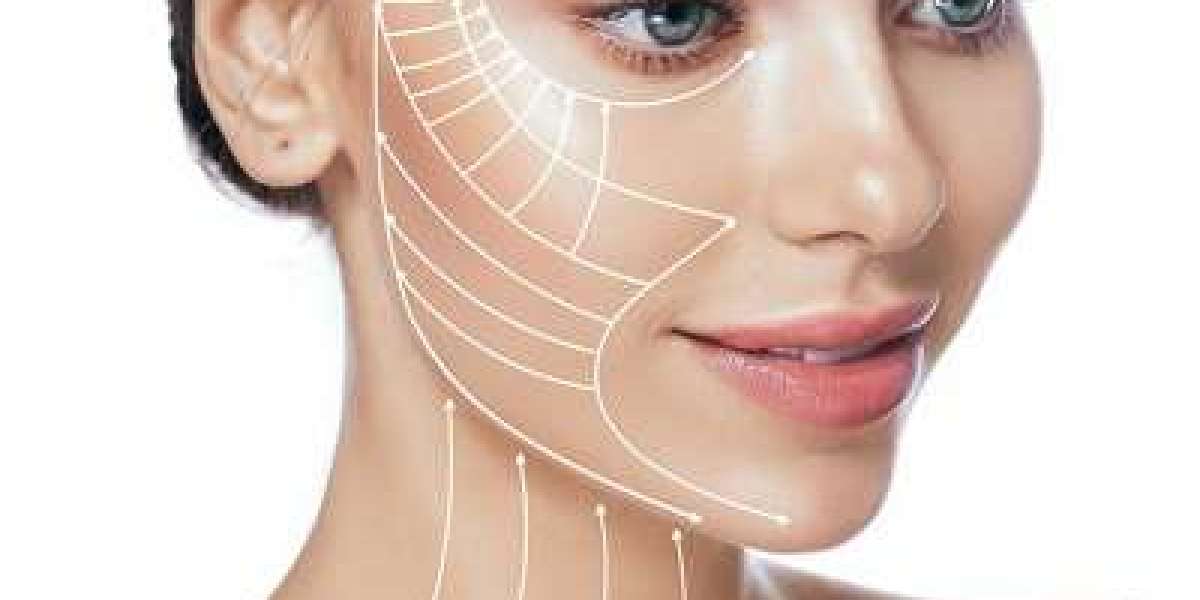When it comes to facial rejuvenation, the deep plane facelift stands out as one of the most sophisticated and transformative surgical approaches available. Unlike traditional facelift techniques that only address superficial layers, the deep plane facelift repositions deeper facial structures to restore youthful volume and natural contours. This technique is particularly effective for individuals with moderate to severe facial aging, especially those seeking Facelift Treatment in Islamabad through skilled and experienced surgeons using modern surgical advancements.
What Is a Deep Plane Facelift?
A deep plane facelift is a surgical procedure that targets the deeper layers of the face — specifically, the superficial musculoaponeurotic system (SMAS), facial ligaments, and deeper fat pads. The technique allows the surgeon to lift and reposition the entire facial framework rather than simply tightening the skin. This results in a more natural and longer-lasting improvement in facial contours, especially in the cheeks, jawline, and midface.
Unlike a standard SMAS facelift, which manipulates and tightens the SMAS layer, the deep plane approach releases key facial ligaments, allowing for more comprehensive repositioning of soft tissue. It addresses the descent of facial fat pads and skin sagging in a single, cohesive motion rather than treating each issue independently.
How the Deep Plane Facelift Differs from Traditional Techniques
Traditional facelifts usually involve dissecting and repositioning the skin and sometimes the SMAS layer beneath it. While these methods offer improvements, they may not fully correct the underlying descent of the midface and cheek areas, and can sometimes lead to an over-tightened or artificial look.
The deep plane facelift, in contrast:
Releases the key ligaments that anchor facial tissues
Lifts skin and muscle together as a unit
Repositions descended facial fat pads to their youthful location
Avoids skin over-tightening, minimizing the risk of a “pulled” appearance
This advanced approach offers more comprehensive rejuvenation and a natural outcome because it treats the face three-dimensionally, rather than just flattening wrinkles or tightening skin.
Benefits of the Deep Plane Facelift
The deep plane facelift offers several key advantages over other facelift techniques:
1. More Natural Results
By lifting the deeper tissues rather than just pulling the skin, the deep plane facelift avoids the telltale signs of surgery. Patients retain their unique facial expressions and avoid the “windblown” look often associated with older techniques.
2. Longer-Lasting Outcomes
Because the procedure addresses the deeper anatomical causes of facial aging, results tend to last significantly longer — typically 10 to 15 years, depending on individual factors such as lifestyle, genetics, and skin quality.
3. Enhanced Midface and Cheek Volume
A major benefit of the deep plane approach is its ability to lift and restore volume in the midface. The technique naturally repositions fat pads, enhancing cheek projection without the need for synthetic fillers.
4. Improved Jawline and Neck Contour
The procedure tightens the jawline and smooths out jowls and neck banding, creating a more youthful lower facial profile. When combined with a neck lift, the results are even more dramatic.
Who Is a Good Candidate?
Candidates for a deep plane facelift are typically individuals in their 40s to 70s experiencing moderate to severe signs of aging, such as:
Sagging cheeks and midface
Deep nasolabial folds
Jowls or loss of jawline definition
Neck laxity or muscle banding
General facial volume loss
Additionally, good candidates should be in overall good health, non-smokers, and have realistic expectations regarding the results and recovery process.
The Surgical Process
The deep plane facelift is a delicate and highly specialized procedure performed under general anesthesia or deep sedation. The process typically involves the following steps:
Incision Placement
Incisions are made discreetly along the hairline, around the ears, and sometimes beneath the chin for neck access.Dissection and Ligament Release
The surgeon carefully lifts the skin and SMAS layer together and releases key retaining ligaments, allowing the entire facial structure to be repositioned.Repositioning of Tissues
The midface fat pads and muscle layers are repositioned to their youthful state, correcting sagging and restoring facial volume.Skin Redraping and Closure
The skin is re-draped over the repositioned tissues and trimmed, avoiding tension. The incisions are closed with fine sutures to promote minimal scarring.
Recovery and Downtime
Recovery from a deep plane facelift is somewhat longer than a standard facelift due to the deeper level of dissection. However, most patients find the results well worth the extended downtime. Here's what to expect:
Swelling and Bruising: Most prominent in the first 1 to 2 weeks, then gradually subsides.
Discomfort: Generally manageable with prescribed medication.
Return to Work: Many patients return to work and social activities within 3 weeks.
Full Results: Become visible between 6 to 12 weeks as residual swelling resolves.
Following your surgeon’s aftercare instructions is crucial for optimal healing and results.
Risks and Considerations
As with any surgical procedure, the deep plane facelift carries some risks, including:
Infection
Bleeding or hematoma
Nerve injury (though rare with experienced surgeons)
Scarring (usually well-hidden)
Asymmetry or dissatisfaction with results
Selecting a highly qualified and experienced facial plastic surgeon greatly minimizes these risks and improves your overall satisfaction with the outcome.
Longevity of Results
One of the biggest advantages of the deep plane facelift is its durability. Because it addresses the deeper structures of the face, the results are more resistant to the natural progression of aging. Most patients enjoy their results for 10 to 15 years, especially when they maintain a healthy lifestyle and protect their skin from sun damage.
Non-Surgical Alternatives: Are They Comparable?
While non-surgical treatments such as fillers, thread lifts, and radiofrequency skin tightening can provide temporary improvements, they cannot replicate the comprehensive and lasting results of a deep plane facelift. These options are ideal for younger individuals with mild aging or for those who are not ready for surgery, but they serve more as maintenance tools rather than complete solutions.
Conclusion
The deep plane facelift is considered one of the most advanced and effective surgical techniques for facial rejuvenation. Its ability to lift and reposition the foundational structures of the face delivers natural, long-lasting results that far exceed those of traditional facelift procedures. If you're considering a facelift that provides comprehensive and elegant facial rejuvenation, the deep plane approach may be the ideal choice.
For individuals looking for expert surgical care, the team at the SKN Cosmetics clinic offers tailored solutions and experienced surgeons specializing in Facelift Treatment in Islamabad. Their commitment to advanced techniques and patient-centered care makes them a trusted name in aesthetic surgery.



